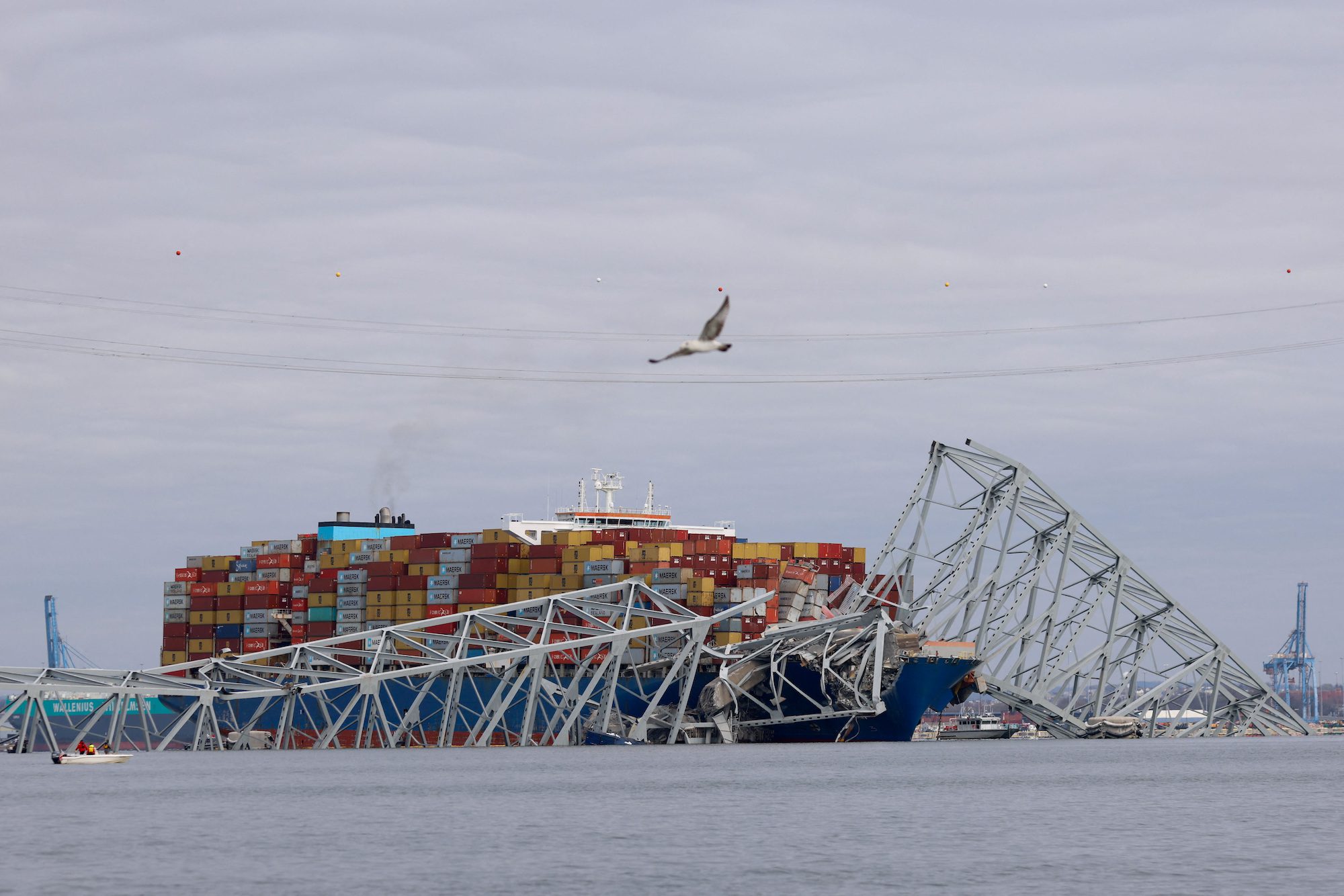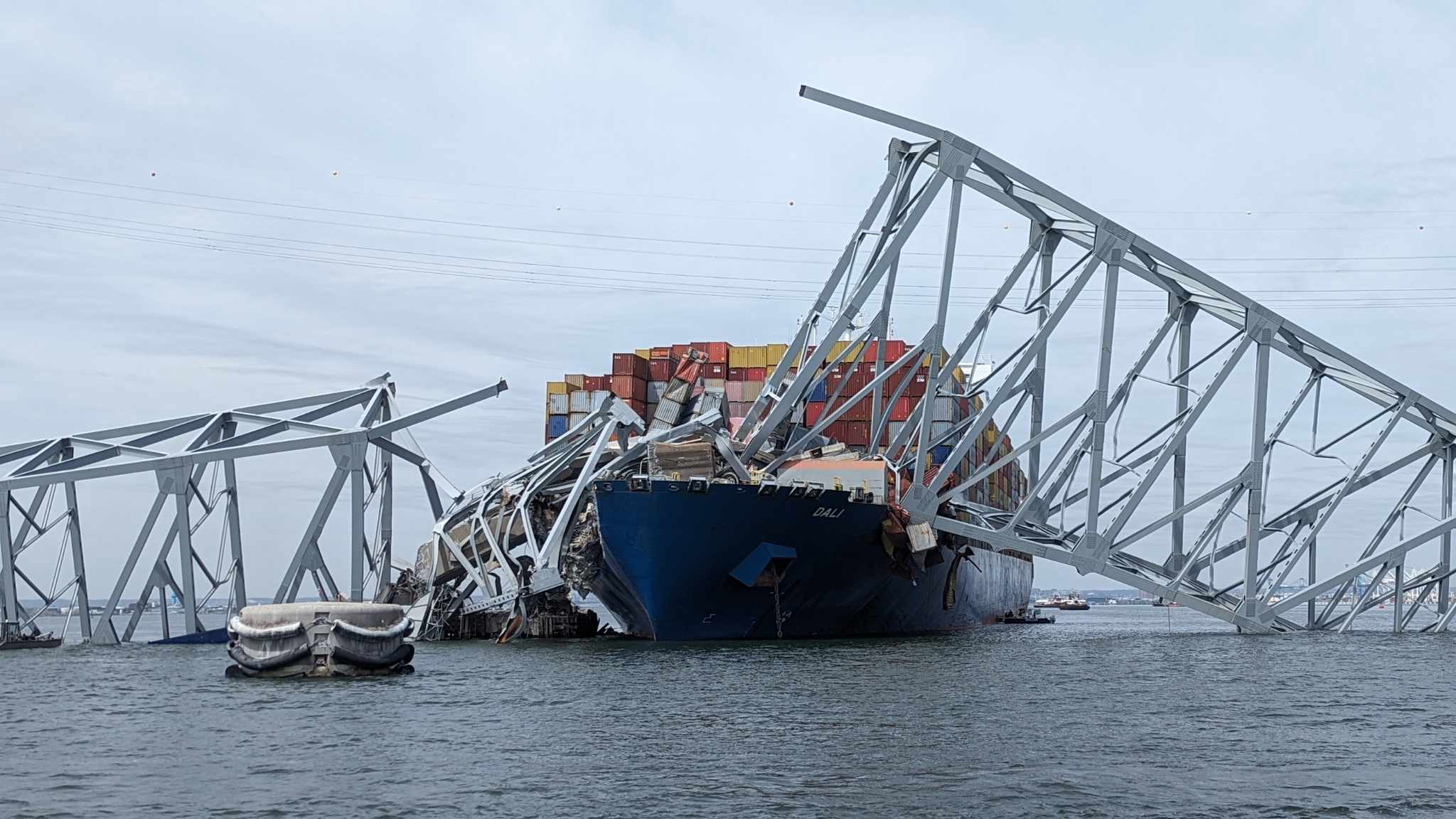Board meeting scheduled for November 18 will address electrical failures that led to six deaths and a catastrophic bridge collapse.
The National Transportation Safety Board will convene a public board meeting on November 18 to determine the probable cause of the containership Dali’s collision with the Francis Scott Key Bridge, an incident that claimed six lives and exposed systemic vulnerabilities in America’s aging bridge infrastructure.
The March 26, 2024 accident occurred when the Singapore-flagged vessel experienced a complete loss of electrical power and propulsion while transiting out of Baltimore Harbor, striking the bridge’s southern pier at approximately 6.5 knots and triggering a catastrophic collapse.
Electrical Failures Under Scrutiny
NTSB investigators have identified critical issues with the Dali’s electrical systems. The vessel experienced two separate blackouts during its approach to the bridge, with electrical breakers HR1 and LR1 unexpectedly tripping when the ship was just three ship lengths away.
Investigators discovered an interruption in the control circuit for HR1’s undervoltage release and subsequently removed a terminal block from the circuit for examination at the NTSB Materials Laboratory. The ship had also experienced two in-port blackouts the day before the accident, with crews switching the electrical bus configuration in response.
Bridge Risk 30 Times Above Acceptable Threshold
In a stunning revelation this past March, the NTSB disclosed that the Francis Scott Key Bridge had a risk level nearly 30 times above the acceptable threshold for critical bridges—a fact that could have been discovered had the Maryland Transportation Authority conducted a recommended vulnerability assessment.
NTSB Chair Jennifer Homendy emphasized the severity of the oversight: “Had they ran the calculation on the Francis Scott Key Bridge, the MDTA would’ve been aware that the bridge was almost 30 times greater than the risk threshold AASHTO sets for critical essential Bridges. 30 times greater.”
She added: “What’s frustrating is not only did MDTA fail to conduct the vulnerability assessment on the Key Bridge, they did not provide, nor were they able to provide, the NTSB with the data needed to conduct the assessment.”
68 Bridges Nationwide Need Assessment
The investigation has identified 68 bridges across 19 states requiring immediate vulnerability assessments, including high-profile structures like the Golden Gate Bridge, Chesapeake Bay Bridge, Verrazano Narrows Bridge, and Greater New Orleans Bridge. All were designed before current safety guidelines were established and lack current vulnerability assessments for vessel collision risks.
Timeline of the Tragedy
The accident unfolded rapidly in the early morning hours. At approximately 01:25, the first blackout occurred when the Dali was 0.6 miles from the bridge, shutting down the main propulsion engine and all steering pumps while the vessel traveled at 9.0 knots.
Despite crew efforts to restore power, a second blackout struck when the ship was only 0.2 miles from the bridge. Pilots called for tug assistance and ordered an anchor drop, while authorities scrambled to close the bridge to traffic. However, only maintenance workers and an inspector remained on the structure when the Dali struck pier 17 at 01:29.
Of the eight people on the bridge, six construction crewmembers were killed, one survived with serious injuries, and one inspector escaped unharmed.
At the November 18 meeting, the NTSB board will vote on findings, probable cause, and safety recommendations, as well as any changes to the draft final report. A synopsis will be available after the meeting concludes, with the complete final report expected several weeks later.
The investigation has already prompted four urgent safety recommendations to bridge owners, the Federal Highway Administration, the U.S. Coast Guard, and the U.S. Army Corps of Engineers to safeguard bridges from vessel strikes.

 Join The Club
Join The Club











